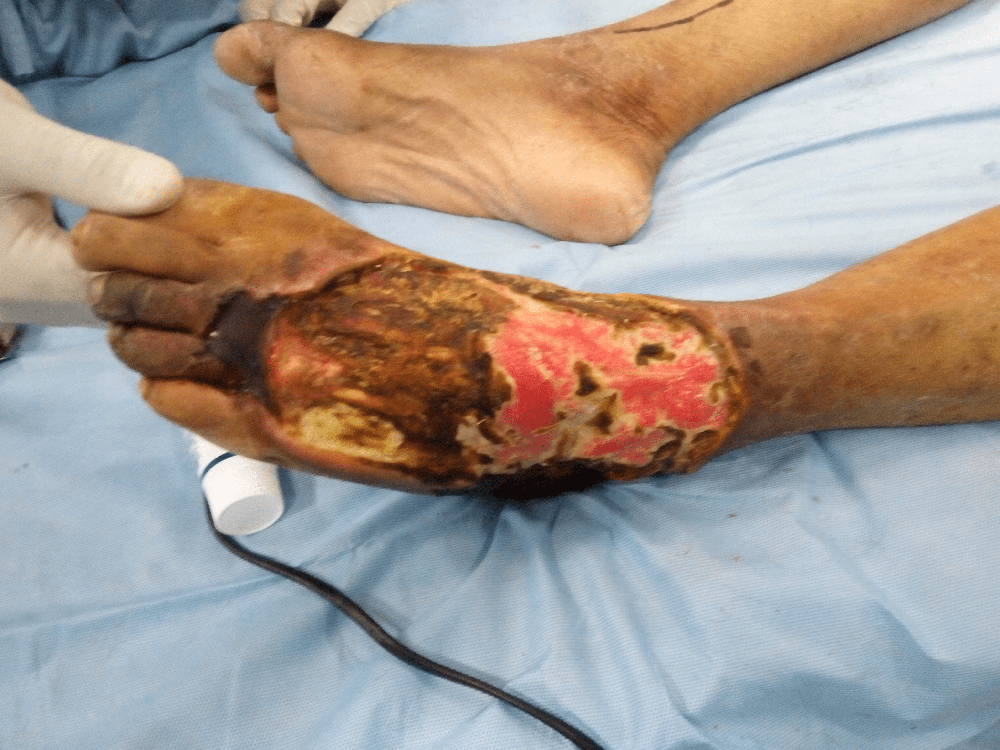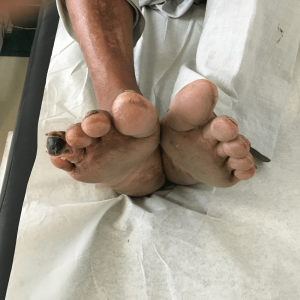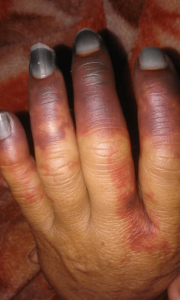VASCULAR AND ENDOVASCULAR SURGERY CLINICS
PERIPHERAL ARTERY DISEASE (PAD)
This is also known as
- Peripheral Vascular Disease – PVD
- Peripheral Artery Occlusive Disease - PAOD
This means that there is blockage of your artery EXCLUDING arteries inside brain tissue and heart muscle itself.
Common denominator will be decreased circulation leading to death of the tissue being supplied.
This will be the most common reason you will be referred to a vascular surgeon.
20% of all the population above the age of 65 years will have this condition.
| S.No. | Target organ | Artery location | Symptoms |
| 1 | Brain | Neck – Carotid | 1. Stroke. 2. Blindness. 3. Transient ischemic attack |
| 2 | Intestines | Abdomen | 1. Pain in abdomen specially after meals. 2. Gangrene of intestines (This is an Emergency) |
| 3 | Kidney | Abdomen | 1. Hypertension. 2. Decreasing kidney function |
| 4 | Limbs | Arm, Leg | 1. Pain on working, walking. 2. Pain at rest. 3. Blue/Black toes. 4. Gangrene |
Risk factors
- Hypertension – Increased Blood Pressure.
- Uncontrolled diabetes.
- Coagulation abnormalities.
- Kidney dysfunction.
- Homocysteine issues.
30% of Diabetics less than 50 years of age have this condition.
Such patients will have 5 times higher risk for Stroke and Heart attacks and thus diagnosing them is very critical.
Diagnoses will be delayed or missed in patients with conditions that limit mobility as symptoms will not be manifest
- Severe lung disease.
- Heart failure.
- Diabetics with neuropathy – here the pain sensation being reduced diagnosis will be difficult.
WHEN TO VISIT THE VASCULAR CLINIC
- If you have any of the symptoms mentioned.
- If you have any risk factor mentioned for more than 6 months duration.
This is a progressive disease and the whole idea is to halt the speed of disease progress so that end organs damages are delayed.
Usually you will not need any procedure and will be managed by risk factor modification and medications.
Proper work up will include
- Complete risk factor assessment.
- Tests specified towards identifying exact narrowing of the arterial system.
- It must be noted that this is not a local disease – this means that just because you have pain in walking only which points to leg arterial location, you will have the disease in your complete arterial system and could be near to having heart attacks, strokes, kidney failures etc.
PROCEDURES THAT MEY BE NEEDED

- Amputations – This is the most common of all procedures done as the patient have delayed presentations and limbs are not salvageable at all by the time they reach the vascular clinic. This will be done to save rest of the limb or the life of the patient.
- Revascularization procedures – This will attempt to increase blood supply to the target organ to prevent target organ deaths.
- Open surgeries.
- Endarterectomy – Unblocking.
- Bypass – Block left as it is alternative blood supply route is created.
- Endovascular procedures
- Angioplasty +/- Stenting
- Atherectomy – Drilling or laser ablation through the block and making the blood vessel diameter wider.
- Open surgeries.
- Usually procedures will not be needed if vascular consultation is timely.
- There is not one procedure to all the PAD patients and based on the patient profile the procedures must be individually planned.
- This group of patients is extremely disadvantaged with only 50% living beyond 5 years of presentation.
- Consider this as the beginning of the endgame of survival in patients whose arteries of the whole body are narrowing slowly but steadily.
- Our aim is to provide minimal procedure that can give relief from pain, tissue loss, wound healing and amputation prevention.
The final determinant of vascular surgeons success will be determined by the patient’s perception of enhancement in the quality of life of the patient’s remaining most valuable years.

Severe PAD – Underwent limited amputation with heel preservation and surgical revascularization bypass.


Blue black toe/fingers – relative early presentation for revascularization procedure.
Professor Dr Digvijay Sharma
Vascular & Endovascular Surgery
For more information please visit
www.professordigvijay.com
